Introduction to Personal Website Design and Its Importance
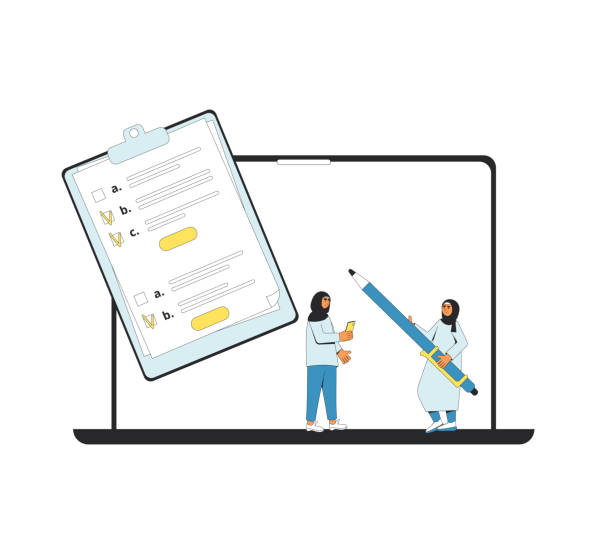
In today’s world, online presence has become more important than ever, and having a personal website is no longer a luxury, but a necessity. Freelancers and artists to specialists in various fields, and even students, can all benefit from the countless advantages of a strong personal website. This website acts as an online portfolio or an always-accessible resume, enabling you to showcase your skills, experiences, and work in the best possible way. Beyond a traditional resume, a personal website allows you to tell your story, share your ideas, and even interact with your audience. This is the first step in your personal branding in the digital space and a path to demonstrating your expertise and unique identity.
The importance of personal website design cannot be underestimated. In an era where everything is moving towards digitalization, not having a credible online footprint can mean missing out on countless opportunities. This website not only helps you to be seen in search engines, but also brings you credibility and trust. Imagine a potential employer or client wants to research you; the first place they will probably go is Google. If you have a professional personal website, this first encounter can be very positive and impactful. It is a powerful educational tool for others and an explanatory platform for your ideas and services. Furthermore, you have complete control over your website’s content and appearance, something less common on social media. This independence allows you to share whatever you want without the limitations of other platforms. Building a personal website is a gateway to new opportunities and personal and professional growth.
Its growing importance lies in your ability to shape your online identity and present a narrative of yourself that is not out of your control. This platform allows you to explain your expertise deeply and comprehensively and display your portfolio in an organized manner. Therefore, a personal website acts as the central hub of your digital identity, allowing you to confidently convey your message to the world. This is a long-term investment in your career and brand with high potential for return on investment. In the rest of this article, we will be with you step-by-step to examine the personal website design process from start to finish and help you create a platform that not only meets your needs but exceeds your expectations. This guide, with a comprehensive and specialized approach, will cover all important aspects.
Are you disappointed with the low conversion rate of your e-commerce site? Rasaweb transforms your e-commerce site into a powerful tool for attracting and converting customers!
✅ Significant increase in visitor-to-buyer conversion rate
✅ Exceptional user experience for increased customer satisfaction and loyalty⚡ Get free consultation from Rasaweb!
Why Do You Need a Personal Website? Advantages and Goals

In the digital age, personal branding has become vital, and a personal website is the cornerstone of this process. But why exactly should you invest your time and energy in creating an individual website? The advantages of having a personal website go beyond mere online presence; it’s a strategic investment in your professional future. The first and most important advantage is complete control over your narrative and image. While social media profiles have limitations in design, content, and even reach, your website is entirely under your control. You can change its design to your liking, publish content you can’t anywhere else, and no algorithm hides you from your audience.
Another key advantage is the ability to comprehensively display your portfolio and work samples. As a freelancer, designer, writer, or any other specialist, having a centralized place to showcase your best work is essential. A personal website allows you to present each project with full details, high-quality images, and even videos, which is not possible with a paper resume or even limited social media profiles. This platform not only increases job opportunities but also convinces potential clients that you are the right expert for their needs. This specialized aspect is crucial for every professional. This website can also act as an entertaining tool, with content that engages the audience and creates interaction.
Increasing credibility and trust are other important goals. A professional website shows that you are serious about your work and value providing complete information to your audience. This credibility plays a significant role in gaining the trust of employers, clients, and colleagues. Also, a personal website is a powerful digital marketing tool that helps you rank better in search engines and be found by people looking for your expertise. This means attracting targeted traffic and increasing opportunities. From an analytical perspective, your website provides valuable data about visitors, their interests, and how they interact with your content, which can be used to improve your future strategies. This data allows you to make more informed decisions for the growth and development of your personal brand. Ultimately, personal website design allows you to have your unique voice and share it with the world, which is a path to self-discovery and development.
Planning and Strategy for Successful Personal Website Design

Before starting personal website design, the planning and strategy phase is crucial. This stage ensures that your website not only looks good but also fulfills your goals and effectively serves your audience. The first step is to set clear goals: why are you building this website? Is it to showcase a portfolio? To attract clients? To share knowledge? The answers to these questions will shape the structure and content of your website. This is a very important guidance step. After that, identifying the target audience becomes important. Who are you writing for or who do you want to attract? Understanding the needs, interests, and demographics of your audience helps you optimize content and design.
The next step in personal website design planning is the content roadmap and site structure. Decide which pages you need (e.g., About Me, Portfolio, Services, Contact, Blog) and what type of content will be on each page. An initial sitemap gives you an overview of the website’s structure and prevents confusion in later stages. At this stage, researching competitors and benchmarking against other successful websites can also be very helpful. This gives you ideas for design, content, and features, but always strive to be unique and maintain your identity. Attention to detail at this stage lays the foundations for a strong and effective personal website.
To assist with this stage, the table below can help you organize your thoughts:
| Planning Element | Description and Key Questions | Importance |
|---|---|---|
| Setting Goals | What is the main goal of building the website? (e.g., displaying work, attracting clients, informing) | Very High: Determines the website’s direction and helps guide all decisions. |
| Audience Identification | Who are your main audience? What are their needs and interests? How do they consume content? | High: Optimizes content and design, leading to more engagement. |
| Structure and Sitemap | What pages do you need? How are these pages linked? Is the navigation logical and easy? | Medium to High: Content organization and navigation have a direct impact on user experience. |
| Keyword Research | What terms do your audience search for to find services or information related to you? | High: Absolutely essential for SEO and visibility in search engines. |
Finally, budget and timeline are also critical factors. Determine how much you can spend and how much time you have for this project. These decisions will affect platform selection, level of customization, and even your content. Detailed planning is the backbone of a successful personal website design that helps you move forward with a clear vision.
Choosing the Right Platform and Tools for Personal Website Design
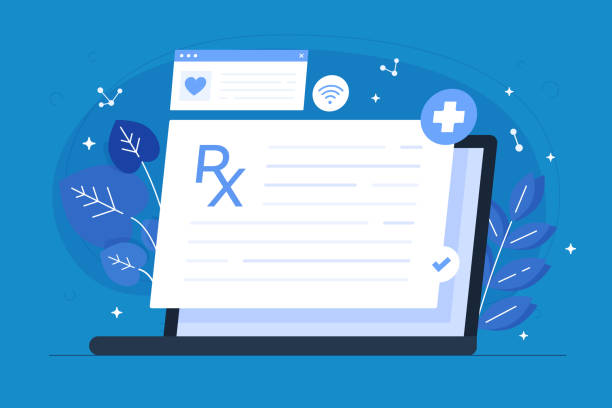
After the planning stage, it’s time to choose the right platform and tools for personal website design. This decision heavily depends on your technical skills, budget, and the goals you have for your website. You have three main options: Content Management Systems (CMS) like WordPress, Website Builders like Wix or Squarespace, and manual coding. Each of these options has its own advantages and disadvantages that must be carefully considered. This section is a comprehensive guide to choosing the best tool.
WordPress is the most popular CMS in the world and powers a large portion of the web. This option is suitable for those seeking high flexibility, extensive features, and complete control over their website. WordPress has thousands of themes and plugins that allow you to add almost any functionality to your site, from image galleries to advanced contact forms. However, using WordPress requires some technical knowledge about hosting, domain, and installation, and the responsibility for site security and maintenance rests with you. This is a more specialized approach that delivers more professional results.
Website builders like Wix and Squarespace are excellent options for beginners or those who want to launch their website quickly without needing coding knowledge. These platforms have simple drag-and-drop user interfaces and often include free or inexpensive hosting and domains. Their main advantage is ease of use and speed of setup. However, their flexibility is less than WordPress, and you may face limitations in full customization or adding specific features. This is an educational option for starting out and can be ideal for those looking for a quick launch.
Manual coding (HTML, CSS, JavaScript) is for those who seek complete control and maximum customization. This method requires programming knowledge and is time-consuming, but it allows you to change every detail to your liking. This option is typically suitable for more complex projects, web developers, or individuals working in web development. Choosing the right platform for your personal website design is a key step in determining the ultimate success of your project. Carefully consider the pros and cons of each option and choose the one that best aligns with your needs and abilities. Keep in mind that this decision will affect all subsequent stages of your work, from maintenance to future capabilities.
Losing potential customers due to an unprofessional website? Rasaweb is your answer! With our specialized corporate website design services:
✅ Boost your business’s credibility and standing
✅ Experience easier attraction of targeted customers
⚡ Act now for a free consultation!
Principles of User Experience and User Interface (UI/UX) Design in Personal Website Design

In the personal website design process, two concepts, User Experience (UX) and User Interface (UI), play a central role. These two are often confused, but they are actually complementary. UI relates to the look and feel of the website: colors, fonts, button and form layouts, and all visual elements with which the user interacts. In contrast, UX refers to the user’s overall experience with the website: Is the site functional? Is navigation easy? Can the user easily find the information they need? A successful personal website design creates a balance between these two.
To ensure an excellent user experience, your website must be user-friendly. This means intuitive navigation; users should be able to access any section they want without thinking. Clear menus, prominent Call-to-Action buttons, and a logical page structure are fundamental principles of UX. Also, website loading speed is of high importance. Today’s users are impatient, and a slow website leads to losing visitors. Optimizing images, using clean and compressed code, and choosing appropriate hosting can help improve speed. This section is very vital for explanation and guidance.
In the realm of user interface, aesthetics and visual harmony are very important. Choosing a suitable color palette, fonts that have high readability, and using whitespace to allow content to breathe, all contribute to your website’s visual appeal. Responsive Design is also a non-negotiable principle. Your website must display correctly on all devices – from desktop computers to tablets and smartphones – and provide a consistent user experience. This is not only essential for user satisfaction, but search engines also prioritize it. Additionally, visual and functional consistency across the site builds user trust and prevents confusion.
A personal website design that adheres to UI/UX principles not only attracts audiences but also keeps them on your site for longer. This means increased engagement, reduced bounce rate, and ultimately, achieving your website’s goals. Always put yourself in the user’s shoes and ask: Is this website comfortable and enjoyable for me? Can I easily find what I need? Is your message clear? The answers to these questions will guide you in your personal website design journey and help you build an effective and pleasant platform.
Creating Engaging Content and Optimizing It for a Personal Website
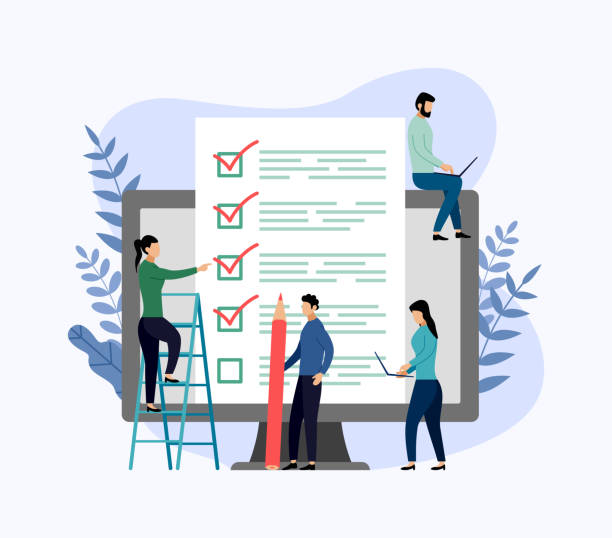
Content is king; this statement holds true in the digital world, especially in personal website design. After preparing the technical infrastructure and visual design of your website, it’s time to create valuable content. Your content should not only be informative but also engaging, educational, and aligned with your website’s goals and target audience. Types of content can include blog articles, case studies, portfolios, videos, podcasts, and even infographics. The choice of content type depends on your field of activity and the method that best connects with your audience. This section includes comprehensive guidance and explanations.
To start, focus on the main sections of your website: the About Me page is where you should tell your personal and professional story in an engaging way. This is an opportunity to build a deeper connection with visitors. The Portfolio page should showcase your best work with full descriptions, high-quality images, and actual results (if possible). Each project should be a small story of your challenge, solution, and achievement. Using question-provoking statements in titles and introductions can help attract the audience and encourage them to read or view more.
But content creation is only half the battle; content optimization for SEO (Search Engine Optimization) is also critically important. This means using relevant keywords in your text, titles, and meta descriptions. Keywords should be naturally integrated into the text, and overstuffing the text with keywords should be avoided, as this can harm your SEO ranking. Image optimization (compression and adding Alt Text), organizing content using Heading tags (H1, H2, H3), and creating internal links to other pages on your website all contribute to improving SEO. These techniques make your content more understandable for search engines.
Blog content is also a powerful tool for attracting organic traffic and establishing your position as an expert. Regularly publish articles related to your field and answer common questions from your audience. This is an educational opportunity for the audience and an analytical one for you to understand which topics receive the most attention. Ultimately, content quality takes precedence over quantity. Focusing on producing original, valuable, and accurate content will make visitors stay on your site longer and even share it with others, which is the best promotion for your online portfolio and your personal website design.
Search Engine Optimization (SEO) for Personal Websites
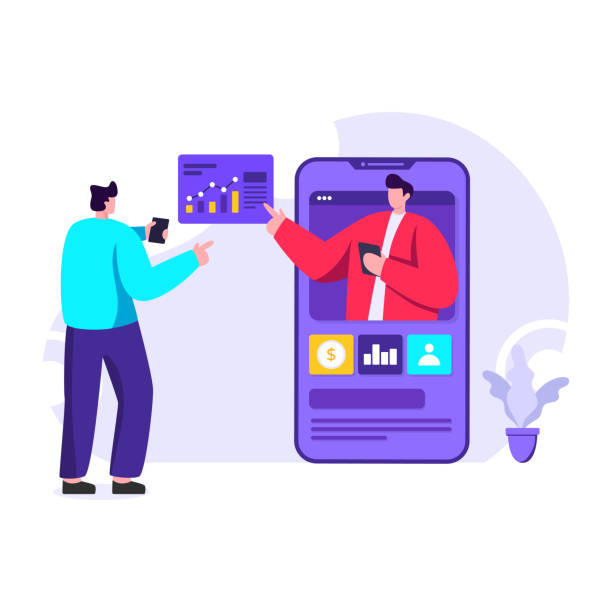
Search Engine Optimization (SEO) is one of the most important aspects of personal website design that is often overlooked. SEO helps you rank higher in Google search results and other search engines, which means attracting more traffic and, consequently, more opportunities for you. SEO can be divided into two main categories: On-Page SEO, which relates to factors within your website, and Off-Page SEO, which refers to factors outside your website, such as backlinks.
In the context of On-Page SEO, the correct use of keywords is very important. Before creating content, you should conduct keyword research to identify the phrases your target audience searches for to find information related to your expertise. Place these keywords naturally in your headings (H1, H2, H3), main text, meta descriptions, and URLs. Optimizing site loading speed is another critical factor; search engines give better rankings to faster websites. Using optimized images, compressing code, and choosing a fast and reliable hosting can significantly improve your site’s speed. This is a specialized and essential step.
Off-Page SEO is more about building credibility and trust for your website in the eyes of search engines. The most important factor in this section is backlinks; links from other websites to your website. High-quality links from reputable sites send strong signals to Google that your content is valuable and trustworthy. To acquire backlinks, you can produce high-quality content that others are willing to link to, or collaborate with relevant websites. Participating in specialized forums, guest blogging on other blogs, and engaging on social media can also help strengthen your Off-Page SEO. This section provides guidance for improving your position in search results.
Here is a checklist for optimizing your personal website’s SEO:
| SEO Element | Importance | Actions |
|---|---|---|
| Keyword Research | High | Identify target keywords, use naturally in text, use keyword research tools. |
| Site Speed | High | Optimize images, compress code, choose suitable hosting, use CDN. |
| Responsive Design | High | Ensure correct display on mobile and tablet, test with Google tools. |
| Internal Linking | Medium | Logical connection between website pages with relevant text links. |
| Backlink Building | High | Produce valuable content, collaborate with reputable sites, participate in the industry. |
SEO is an ongoing process and requires patience and effort. However, investing in SEO will yield significant returns for your personal website design and help you get noticed in the digital world and gain more opportunities.
Maintenance, Updates, and Security of a Personal Website

After designing your personal website and launching it, your work is not finished. In fact, maintaining, updating, and securing your website are just as important as the initial design process. A poorly maintained website may not only slow down or crash, but it can also become an easy target for cyberattacks. This section provides vital guidance for maintaining the health and security of your website.
Regular updates are essential for any website, especially those using a CMS like WordPress. These updates typically include performance improvements, bug fixes, and most importantly, security patches. Ignoring updates can expose your website to security vulnerabilities. In addition to the CMS core, you should also keep your plugins and themes updated. Before any major update, always create a backup of your website so you can revert to a previous state if issues arise. This is a specialized precaution that prevents data loss.
Website security is a major concern. Hackers are constantly looking for weaknesses in websites. To protect your personal website, take the following steps:
- Use strong and unique passwords for your admin panel and hosting. Never use similar passwords across multiple platforms.
- Enable Two-Factor Authentication (if possible) for an extra layer of security.
- Install a reputable security plugin (like Wordfence or Sucuri for WordPress) that offers firewall and malware scanning.
- Delete any plugins or themes you are not using, as they can be security vulnerabilities.
- Use an SSL certificate (Secure Sockets Layer) to encrypt communication between the website and visitors (usually with a URL starting with https://). This not only increases security but is also beneficial for SEO.
- Regularly and automatically back up your website and database and store them in a secure location outside the main host.
Monitoring website performance is also an important part of maintenance. Periodically check site loading speed, broken links, and contact forms to ensure they are functioning correctly. Tools like Google Analytics and Google Search Console can help you monitor traffic, user behavior, and SEO errors. With this continuous care, your personal site building will always be in its best condition and help you confidently achieve your goals. This section offers an analytical approach to maintenance that allows you to identify necessary improvements.
How much does losing business leads due to an unprofessional website cost you? Solve this problem forever with professional corporate website design by Rasaweb!
✅ Increase credibility and trust of potential customers
✅ Easier attraction of new business leads
⚡ Get a free consultation now!
Beyond the Personal Website: Opportunities and Growth
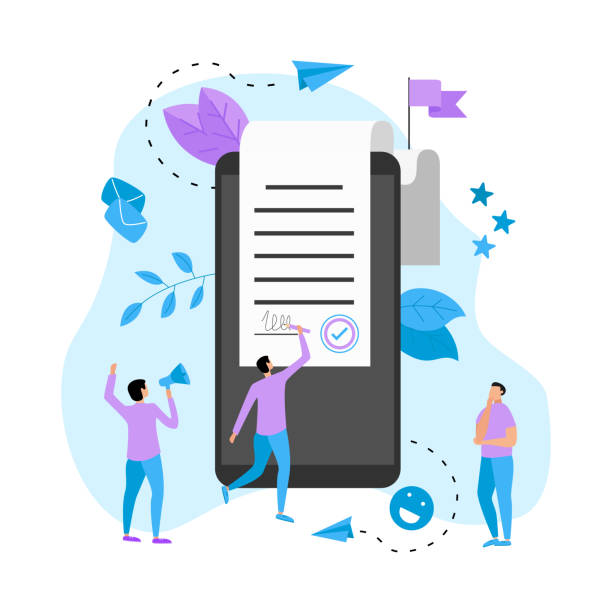
A personal website is not just a static platform for displaying information; it can become a center for your professional growth and development. After completing your personal website design and ensuring its proper functioning, it’s time to think about how you can leverage its full potential to create new opportunities and continuous growth. This section shows you how to transform your website from a simple showcase into a powerful tool for success. This can be a question-provoking and inspiring content that guides you towards new horizons.
One of the greatest opportunities is content marketing. By creating an active blog section and regularly publishing articles, videos, or podcasts related to your field of expertise, you can attract your target audience. This content not only has educational value but also strengthens your position as an expert in that field. For example, if you are a graphic designer, you can publish tutorials on design software or tips related to visual branding. This approach helps you build an online community around your expertise and increase interaction with it.
Networking and collaboration are also possible through a personal website. By using contact forms, comment sections, and even integrating social media, you can connect with visitors, colleagues, and potential clients. These connections can lead to joint projects, new job opportunities, or even the discovery of new areas of activity. Your website can serve as a central point for all your online activities and help you create an integrated digital presence. Actively participate in these networks and share your website content on them to attract more traffic.
Revenue models can also be implemented through a personal website. Although the main goal of many personal websites is branding, you can use it to offer consulting services, sell digital products (such as e-books or online courses), or even accept advertisements (if you have significant traffic). This helps you generate income from your expertise in addition to branding. This analytical aspect gives you the opportunity to examine your revenue models and choose the best way to create value.
Finally, remember that personal website development is a continuous journey. By considering user feedback, analyzing traffic data (using tools like Google Analytics), and staying informed about the latest digital trends, you can continuously improve your website and turn it into a more powerful tool for achieving your goals.
The Future of Personal Website Design and Final Summary
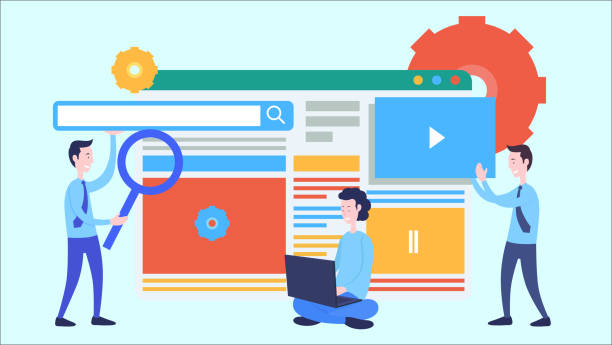
At the end of this comprehensive guide on personal website design, we will look at the future and upcoming trends in this field. The digital space is constantly changing, and awareness of these changes is crucial for maintaining the relevancy and effectiveness of your website. This section includes news and an analytical look at future trends that could shape the next generation of personal websites.
One of the most important future trends is Artificial Intelligence (AI) and Machine Learning, which are increasingly being integrated into website design. From advanced chatbots to improve user experience to AI tools for content generation and SEO optimization, these technologies have great potential to change how we interact with websites. Websites are expected to become smarter and be able to personalize content and experience based on user behavior. This is a new specialized approach that allows websites to interact uniquely with each visitor.
Another trend is a greater emphasis on mobile experience and “Mobile-First” design. Given that a large portion of internet traffic comes from mobile devices, your website should primarily be optimized for mobile users. This means high loading speed, easy navigation, and a Responsive design that displays well on any screen size. Google Mobile-Friendly Test can be a useful tool in this regard to ensure your website performs flawlessly on mobile devices.
Accessibility has also become a priority. Websites should be usable for people with disabilities, including those with low vision or hearing impairments. This includes using alt text for images, captions for videos, and designing with appropriate color contrast. This is not only an ethical requirement but also beneficial for SEO and increases your audience reach. This educational aspect in website design is of great importance and demonstrates the inclusiveness and comprehensiveness of your website.
Finally, Digital Storytelling is becoming increasingly important. Personal websites are not just for providing information, but are designed to tell your story in an engaging and unique way. Using short videos, animations, and interactive graphics can help you tell your story unforgettably. Building a personal website is a creative and dynamic process that never ends. By considering these trends and continuously investing in your website, you can ensure that your online presence remains effective and impactful. Your personal website is a reflection of you and your profession, and its value will go beyond the cost and time spent on it. With a commitment to continuous growth and improvement, your website can become an unparalleled asset for your success.
Frequently Asked Questions
| Question | Answer |
|---|---|
| Why should we have a personal website? | A personal website helps you build your personal brand, showcase your skills and portfolio, connect with your audience, and gain new career opportunities. |
| What steps should be taken to design a personal website? | The steps include defining goals, choosing a domain name and hosting, selecting a platform (e.g., WordPress), designing the user interface, creating content, optimizing for search engines (SEO), and launching. |
| Do I necessarily need to know coding to design a personal website? | No, by using Content Management Systems (CMS) like WordPress or Website Builders like Wix and Squarespace, you can design your website without needing coding knowledge. |
| What is a Domain Name and how do I choose one? | A domain name is your website’s address on the internet (e.g., yourname.com). It is best to choose a name that is short, memorable, relevant to you or your business, and has an appropriate extension (such as .com, .ir). |
| What is Hosting and why do I need it? | Hosting is space on the internet where all your website’s files and information (such as images, texts, codes) are stored to be always accessible to users. Without hosting, your website will not be visible. |
| What should a personal website’s content include? | Content usually includes an About Me page, portfolio, services/skills, blog (articles), contact information, and a contact form. |
| How can I optimize my personal website for search engines (SEO)? | By using relevant keywords, producing quality content, improving website loading speed, being responsive for mobile, building internal and external links, and optimizing title and description tags. |
| Why is Responsive Design important for a personal website? | Responsive design ensures that your website displays correctly on all devices (computer, tablet, mobile) and provides a good user experience, which is also important for SEO. |
| What should I do for personal website security? | Use an SSL certificate (HTTPS), regularly update the platform and plugins, use strong passwords, perform regular backups, and install a firewall or security plugins. |
| How can I increase my personal website’s traffic (visitors)? | Through SEO optimization, content marketing (blogging), social media activity, email marketing, online advertising, and collaboration with other websites. |
And other services of Rasa Web Advertising Agency in the field of advertising
Smart Content Strategy: A professional solution to increase click-through rates with a focus on SEO-driven content strategy.
Smart Marketplace: A professional solution to improve SEO ranking with a focus on customizing user experience.
Smart Content Strategy: A new service to enhance campaign management through key page optimization.
Smart Conversion Rate Optimization: A professional solution to attract customers with a focus on precise audience targeting.
Smart Advertising Campaign: A new service to increase customer acquisition through marketing automation.
And over a hundred other services in the field of internet advertising, advertising consulting, and organizational solutions
Internet Advertising | Advertising Strategy | Advertorials
Resources
Complete Guide to Choosing the Best Domain Name for a Personal Website
Designing a Personal Website with WordPress: Step-by-Step
10 Key Tips for Designing an Attractive Personal Website
Personal Website SEO: Increasing Visits and Ranking on Google
❓ Are you ready to transform your business in the digital space? Rasaweb Afarin Digital Marketing Agency, by offering specialized and integrated solutions, including advanced WordPress website design services, helps you have a powerful and impressive online presence.
📍 Tehran, Mirdamad Street, next to Bank Markazi, Kazerun Jonoubi Alley, Ramin Alley, No. 6
☎️ 02126406207


